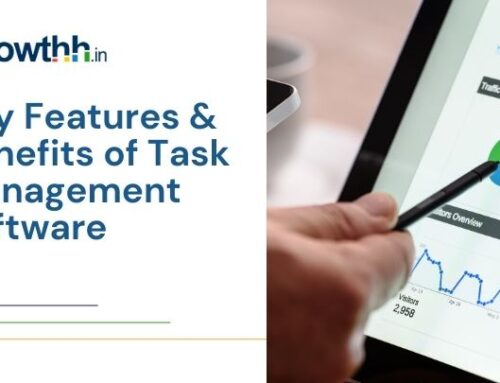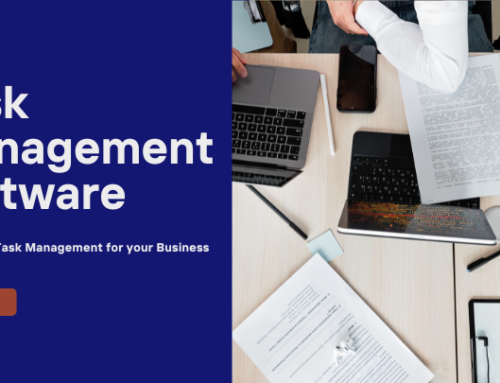Effective task management lies at the heart of successful projects, ensuring each team member understands their responsibilities, timelines, and priorities. This guide dives into the intricacies of task management, its challenges, and how modern task management software can revolutionize team productivity and project outcomes. By providing strategic insights and outlining essential features, we aim to equip you with everything needed to build an efficient, resilient task management system.
Understanding Task Management and Its Role in Projects
Task management is the systematic process of identifying, assigning, prioritizing, and tracking tasks to ensure their completion within designated timelines. Unlike broader project management, task management zeroes in on individual actions, empowering teams to move through each project phase smoothly and complete specific activities that collectively push the project forward.
Well-executed task management is vital in maintaining momentum, minimizing bottlenecks, and ensuring that no task or deadline falls through the cracks. For project managers (PMs), effective task management provides real-time visibility into project status, allowing them to make informed adjustments that ensure successful completion.
Key Differences: Task Management vs. Project Management
While task management and project management are closely related, they serve distinct purposes within the project lifecycle:
- Task Management: Focuses on the specifics—breaking down projects into smaller actions and assigning them to team members. Task management tools offer clear visibility on progress, deadlines, and dependencies to help teams remain on track with each task.
- Project Management: Encompasses high-level strategies that coordinate timelines, resources, budgets, and overarching goals across entire projects. Project management involves tracking milestones, deliverables, and schedules that bring individual tasks together into a cohesive workflow.
Task management software often integrates with project management tools, giving PMs the visibility needed to align task execution with larger project goals.
Common Challenges in Task Management
Despite its importance, task management can be fraught with difficulties. Common challenges include:
- Lack of Standardized Processes: Teams without standardized workflows face inconsistencies, delays, and redundancies.
- Manual Tracking: Relying on spreadsheets or paper records is error-prone and inefficient, especially for complex projects.
- Difficulty in Collaboration: Task tracking across disparate tools disrupts the flow of information, creating silos and causing confusion.
- Inconsistent Communication: Teams often struggle with miscommunication when they lack centralized platforms for collaboration and updates.
- Repetitive Task Management: Routine tasks, such as weekly reports, can waste time and divert resources from more strategic efforts.
- Real-Time Data Accessibility: Without real-time access to metrics, PMs lack a comprehensive view of project performance, leading to suboptimal decisions.
The right task management software can help overcome these hurdles by automating workflows, centralizing information, and enhancing team collaboration.
Benefits of Using Task Management Software
Task management software offers a variety of advantages that can elevate team productivity and project outcomes. Key benefits include:
- Centralized Task Overview: Provides a single platform to monitor all tasks, ensuring complete visibility.
- Prioritization of Tasks: Enables managers to rank tasks by priority, ensuring critical deadlines are met first.
- Enhanced Collaboration: Facilitates communication through in-task comments, notifications, and user tagging, making collaboration seamless.
- Subtasks and Dependencies: Breaks down complex tasks into manageable subtasks with dependencies, allowing for greater precision in task planning.
- Automated Repetitive Tasks: Automates routine activities, freeing up time for more value-adding work.
- Real-Time Progress Monitoring: Enables a quick overview of task status, ensuring alignment with project timelines.
- Accessibility for Remote Teams: With cloud-based solutions, remote teams can access and update tasks from anywhere.
Essential Features of Task Management Software
When selecting task management software, certain features are critical to driving effective task management:
1. Visual Task Management
A user-friendly visual interface should support multiple views—Kanban, Gantt chart, timeline, and list—to cater to various project methodologies.
2. Real-Time Collaboration
In-task comments, team member tagging, and integrated communication tools improve collaboration and keep all conversations within context.
3. Automation of Workflows
Automation simplifies task creation, assignment, and tracking, using “if-this-then-that” rules to save time and reduce manual input.
4. Third-Party Integrations
Seamless integration with tools like Slack, Google Drive, and CRM software ensures that all necessary information is within reach, eliminating the need to switch platforms.
5. Customizable Templates
Pre-built templates expedite the setup process and provide an immediate structure tailored to various workflows and industries.
6. Interactive Dashboards
Dashboards that visualize KPIs and project metrics in real-time support informed decision-making and strategic adjustments.
7. Data Import/Export Capabilities
Allows teams to easily pull in or export data from different sources, streamlining the workflow and minimizing data entry errors.
Selecting the Right Task Management Software
Choosing the right task management tool depends on understanding your team’s unique needs. Here are several criteria to consider:
- Scalability: Opt for software that grows with your team’s needs, providing advanced features without overwhelming new users.
- User Interface: A straightforward, intuitive design minimizes the learning curve and boosts user adoption.
- Collaboration and Communication: Ensure that the software supports seamless inter-team and intra-team collaboration.
- Integration Capacity: Confirm that the tool integrates well with your current tech stack, including communication platforms and CRMs.
- Cost-Effectiveness: Evaluate the pricing model based on your team size, required features, and anticipated ROI.
Task Management Best Practices for Teams
1. Set Clear Objectives and Expectations
Define goals, responsibilities, and expectations from the outset to ensure alignment across the team. Every team member should understand the end goal and their role in achieving it.
2. Break Down Complex Projects
Segmenting large projects into smaller tasks and subtasks clarifies the path to completion, helping team members maintain focus and manage workload.
3. Prioritize Tasks Strategically
Establish a priority system to ensure that the most critical tasks receive attention first. Align task priority with project deadlines to avoid bottlenecks.
4. Encourage Frequent Communication
Regular check-ins and updates ensure that everyone remains informed about progress and potential roadblocks, reducing the likelihood of misunderstandings.
5. Leverage Automation for Routine Tasks
Automate repetitive or low-value tasks to allow team members to concentrate on high-impact work, improving overall productivity.
6. Monitor Progress with Real-Time Metrics
Use real-time dashboards to keep track of progress, ensuring project milestones are met and allowing for proactive adjustments if timelines slip.
Final Thoughts on Optimizing Task Management
Effective task management requires a blend of the right tools, clear communication, and a disciplined approach. By implementing task management best practices and leveraging software with robust features, teams can optimize productivity, enhance collaboration, and drive better project outcomes. The right task management software simplifies task organization, centralizes communication, and ensures that every team member has the resources they need to perform at their best.




Leave A Comment